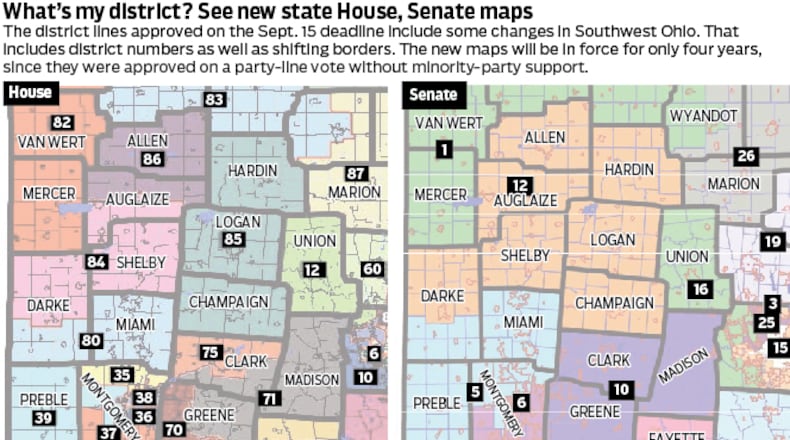The commission’s five Republican members all voted for the new maps; the absence of Democratic support means they are only valid for four years. Both sides anticipated swift litigation.
Not only will Butler County’s Ohio House districts be renumbered, Milford and Wayne townships and the city of Trenton will be represented by the same lawmaker who will represent Preble County and the southwestern edge of Dayton. Butler County’s Ohio Senate district will also have Milford and Wayne townships, and the city of Trenton be represented by the district to the north of the county.
Butler County Democratic Executive Chairman Brian Hester said the decisions for some of the Butler County divisions “makes no sense,” specifically mixing Trenton with Preble County voters.
“Voters overwhelmingly voted for reforms and wanted maps passed with bipartisan agreement,” he said. “The GOP legislative leadership is thumbing their nose at the voters and want to continue to business as usual with more political radicalism and the corruption we’ve seen from Columbus.”
The November 2015 ballot initiative received nearly 71.5% support of voters that election to change how Statehouse district boundaries are drawn following the decennial census. The goal was to avoid having gerrymandered districts, which would favor one party over the other.
Democrats and Republicans said that didn’t happen following this week’s vote on new Statehouse district maps.
Ohio Gov. Mike DeWine, one of the seven members of the Ohio Redistricting Commission, said the committee “could have come up with a map that was much more clearly, clearly constitutional” and believes the constitutionality of the maps will be challenged in court.
Ohio Secretary of State Frank LaRose said “the process will be different” the next time Statehouse maps are redrawn in four years, pending the outcome of any legal challenges.
Butler County Republican Party Executive Chairman Todd Hall said he also was surprised Butler County was divided the way it was “given that Butler continues to grow while other parts of Ohio decline in population.”
However, he said the redrawn districts lines “will still allow our constituents very excellent representation based on the new maps.”
Here’s how Butler County’s Ohio House and Senate districts will change until at least 2026:
- The 51st District will be renumbered as 44, and will no longer represent Fairfield and Ross Twp., but will gain the city of Oxford.
- The 52nd District will be renumbered as 45 and gain Fairfield and Ross Twp., and represent all of Fairfield Twp., becoming a strip along Butler County’s southern end.
- The 53rd District will be renumbered as 46 and see it condensed to the northeastern area of Butler County, which includes Madison Twp. and now all of Middletown.
- The 43rd District will be renumbered as 39 and will include Milford and Wayne townships, and Trenton. This district also includes Preble County and parts of Montgomery County, including Trotwood.
- The 4th Ohio Senate District will lose Milford and Wayne townships, and Trenton to the 5th Senate District, and will represent all of Middletown.
While Hall said he’s “not sure how this will turn out” with anticipated legal challenges, he said he’s “content to let the process work itself out.”
Hester said the process was the GOP legislative leadership “thumbing their nose at voters” by continuing to operate “business as usual with more political radicalism.” Past Ohio Statehouse and Congressional district maps have been deemed gerrymandered, giving the Republican Party an unfair advantage in the number of GOP-leaning districts. Ohio voters decided in separate elections to have a more fair approach to redraw Statehouse and Congressional districts.
The constitutional amendment says the proportion of districts be based on general election results over the past 10 years, and reflect the voting tendencies of residents.
Over that time, Republicans have won 54% of the votes in the contested federal and non-judicial state races. However, legislative Republicans argue their party won 81% of the elections.
Hester doesn’t think the map will survive by the end of the year.
“The Ohio Supreme, despite being entirely Republican save one seat, barely upheld the maps in 2012 by one vote. The Court has since changed,” Hester said of the court that’s now a four-to-three split favoring Republicans. “I would be surprised to see the Ohio Supreme Court says these maps satisfy the constitutional requirements voters enacted.”
About the Author

